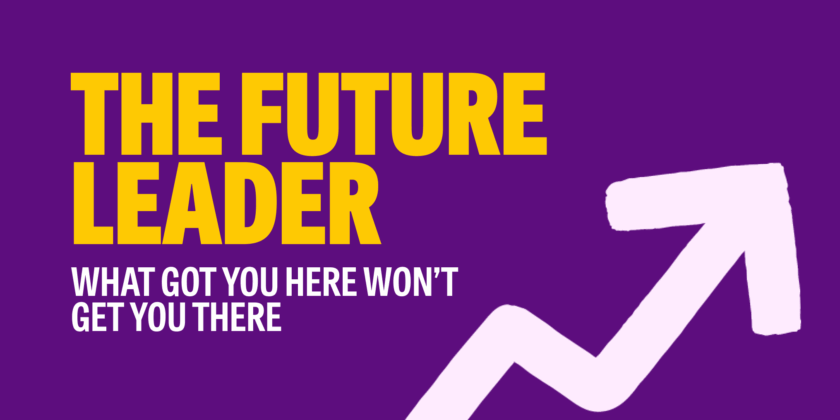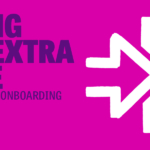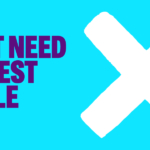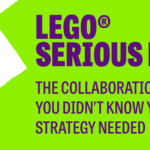The leadership team had invested heavily in agile transformation, psychological safety training, and a new performance framework focused on empowerment. They’d done everything the consultants recommended. Yet three months in, the CEO noticed something: decisions were taking longer than before. Teams were waiting for clarity that never quite arrived. And the most talented people were leaving for opportunities where they felt they could actually make an impact.
What went wrong? Nothing dramatic. The leadership behaviours just hadn’t evolved to match the new structures. Leaders were still the final decision-point on everything, still improving every proposal that crossed their desk, still demonstrating their value by being the smartest voice in every conversation. They’d changed the systems but not themselves. The gap between the culture they were trying to create and the leadership habits they were modelling was creating confusion, not empowerment.
Now, although this story isn’t from a single client, it’s painfully familiar. We see versions of it in financial services, tech, charities, even fast-growing scale-ups. The labels change; the pattern doesn’t.
You can spot it by the tell-tale signs: the meeting after the meeting, decisions that “circle back”, shadow approvals, “safe to speak” but not safe to disagree, bright people going quiet, and updates that sound busy yet move nothing forward. It isn’t a transformation failure so much as a behaviour lag – the systems stepped into the future, but the habits stayed a half-step behind.
This is the trap Marshall Goldsmith identified years ago, but it’s showing up in new ways now: what got you here won’t get you there. It’s not that leaders are operating like it’s 1999 – most have genuinely tried to evolve. The problem is subtler. The very behaviours that made you successful, that got you promoted, that built your credibility, have become the ceiling for what’s possible for your organisation. And because these behaviours have been rewarded for so long, you probably can’t see them clearly anymore.
The Goldsmith Principle: What You Need to Let Go
Marshall Goldsmith’s research identified 21 specific habits that successful leaders must overcome to reach the next level. These habits are the natural result of behaviours that were actively rewarded during your climb.
In my work with senior leadership teams, five patterns show up consistently:
1. Starting with ‘No,’ ‘But,’ or ‘However’ is perhaps the most common.
Someone presents an idea, and your immediate response is to identify the flaw, the exception, the reason it won’t work quite as proposed. It feels like adding value – you’re stress-testing the thinking, showing your experience, protecting the organisation from naïve mistakes.
What it actually does is train people to stop bringing you early-stage ideas. Innovation dies with the “but” before it has a chance to develop. By the time an idea reaches you, it’s already been sanitised of anything genuinely novel because your team has learned to self-censor anything you might immediately critique.
2. The negativity habit, ‘let me explain why that won’t work,’ often comes from time pressure.
You’re busy, you can see the obstacles clearly, and it feels efficient to highlight them immediately rather than let the conversation meander. The unintended consequence is that you become known as the person who kills ideas rather than develops them.
Your team starts avoiding you when they’re trying to solve problems creatively. They present only fully-formed solutions they think you’ll approve, which means you’re no longer involved in the actual thinking work, just the approval stage. You’ve removed yourself from where real value gets created.
3. Failing to give proper recognition might seem like a small thing, but it compounds fast.
You’re focused on the next challenge, the current crisis, the deadline approaching – acknowledging what just got delivered feels less urgent than tackling what’s coming.
Except recognition is how people know their work mattered, how they understand what good looks like, and how they stay motivated through difficult periods. Without it, your best people quietly conclude that their contributions aren’t seen and start looking elsewhere. By the time you notice they’re disengaged, the damage is done.
4. Clinging to the past shows up in phrases like “we’ve always done it this way” or “back when we…”
It’s natural – you’re drawing on experience that served you well. But it creates legacy cultures where precedent matters more than current reality. Teams learn that proposing something genuinely different is futile because the answer will be a story about why the old way worked.
This becomes particularly damaging when market conditions have shifted or new talent arrives with different expertise. You’re inadvertently teaching people that their fresh perspective is less valuable than your historical experience.
5. Not listening is the habit leaders most consistently underestimate in themselves.
You’re in the meeting, you’re nodding, you’re clearly paying attention. But you’re formulating your response while they’re still talking, checking your phone during parts you think you already understand, or cutting them off when you’ve grasped enough to know where this is going.
Real listening, the kind where you’re genuinely trying to understand rather than waiting to respond, has become rare in senior leadership. And people can tell. They learn to keep their contributions short and simple because they know you’re not really taking it in anyway.
These five habits aren’t dramatic failings. They’re subtle patterns that undermine the performance you’re trying to create. And the challenge is that they’re largely invisible to the person practising them.
What Future-Ready Leadership Actually Looks Like
The leadership competencies required for 2026 look fundamentally different from those that built careers in previous decades. Gartner’s 2024–25 research shows that leader and manager development remains the top priority for HR leaders for the third consecutive year, yet many organisations are struggling to define what future-ready actually means. The gap isn’t knowledge, it’s capabilities that genuinely didn’t matter much twenty years ago and are now critical.
Research from Novoexec on skills for 2026 identifies five core competencies emerging as mission-critical, while Deloitte’s 2024 Human Capital Trends emphasises that as work becomes more boundaryless, uniquely human capabilities become more important. That gives us seven core leadership competencies to focus on developing right now:
1. Strategic Agility
This isn’t about having the perfect plan, it’s about pivoting fast when the plan breaks. Future-ready leaders scan the horizon for disruptions, make bold decisions without perfect information, and shift gears quickly without losing stakeholder trust.
They balance visionary thinking with operational flexibility – a rare combination that separates leaders who thrive in volatility from those who freeze waiting for clarity that never arrives.
2. Digital and AI Literacy
Leaders don’t need to write code, but they must understand how digital transformation and data intelligence fuel growth and competitive advantage. This means fluency in interpreting performance data, comfort leading tech-driven innovation, and the ability to collaborate effectively with technical stakeholders.
The future of leadership is data-informed, not purely instinct-driven, though human judgement remains central to the decisions that matter most.
3. Psychological Safety
Google’s Project Aristotle research identified psychological safety as the single strongest predictor of team effectiveness, yet most leaders still confuse safety with comfort.
Real psychological safety is candour plus accountability. People can challenge ideas, admit mistakes, and take interpersonal risks without fear of punishment, but standards remain high. Safety without accountability produces mediocrity. Accountability without safety produces fear. You need both, and that’s a fundamentally different leadership stance than most of us were taught.
4. Purpose-Driven Communication
Executives are no longer just representing the company internally – they’re amplifying its value publicly. This means aligning business messaging with mission and societal impact, communicating clearly during uncertainty, and fostering cultures of inclusion and transparency.
Leaders who can’t connect authentically, both internally and externally, will lose trust, talent, and market relevance. As Novoexec’s research notes, this skill isn’t a communication add-on – it’s core to how leaders create followership in an era where people choose where to invest their energy.
5. Resilience and Change Leadership
Future-ready leaders need high emotional resilience – a mindset that sees change as opportunity rather than threat, and the ability to lead others through ambiguity while staying grounded.
Burnout at the top is real, and boards are learning that resilience is a key ROI indicator. The old “plan thoroughly, then execute” model that Deloitte identifies as increasingly obsolete gets replaced by “sense, respond, adapt, repeat.”
6. Coaching-Led Leadership
Systematic research shows that coaching behaviours correlate strongly with team resilience and innovation, but moving from telling people what to do to helping them discover their own answers feels inefficient when you can see the solution immediately.
The point isn’t abdicating decision-making – it’s recognising that your job is building organisational capability, not being the permanent answer-provider. Effective people development strategies position this as the core work of leadership, not an optional add-on.
7. Collaborative Intelligence
Tomorrow’s executives succeed by harnessing collective intelligence, enabling cross-functional team dynamics, showing emotional intelligence in high-stakes collaboration, and coaching others rather than controlling outcomes.
The best leaders of 2026 are co-creators of strategy, not just top-down decision-makers. They orchestrate expertise, rather than insisting on being the expert.
The Bridge: Feedback, Self-Awareness, and Accountability
The gap between old habits and new competencies gets bridged through honest feedback and genuine self-awareness, neither of which most leaders have in sufficient quantity. We significantly overestimate our own effectiveness while remaining blind to the specific behaviours that undermine our impact.
Three practical ways to bridge this gap:
1. Run a live 360, but not the survey kind.
Commission someone to conduct six to eight stakeholder interviews with a clear brief: identify three specific behaviours you should stop, start, or continue.
Publish your commitments to your team and check progress monthly. The live conversation format produces insights that tick-box surveys never capture.
2. Work with a Coach
Someone who will help you reflect, will challenge you, and will facilitate your growth journey towards becoming a stronger leader.
3. Create a Learning Culture
Every fortnight, fifteen minutes with your team: one win, one miss, one change for next time. This normalises learning from failure and models that leadership evolution is continuous work, not a destination you reach and then stop.
Successful team performance frameworks include leadership behaviour as a measurable performance indicator, not an assumed constant.
How LTT Helps Leaders Actually Evolve
At Let’s Talk Talent, we work with senior leaders through our Art, Science, and Humanity model because leadership evolution requires all three.
- Art is bespoke design – leadership development journeys that fit your specific context, not generic programmes that assume all leaders need the same development.
- Science is evidence-based tools, live 360 interviews, and behaviour metrics your organisation can actually track.
- Humanity is creating psychologically safe coaching relationships where real change becomes possible because leaders feel genuinely supported rather than evaluated.
The patterns we address most frequently:
- Hero leadership, where the instinct to personally solve every crisis has made you indispensable and therefore a bottleneck, creating learned helplessness in your team.
- Toxic politeness, where conflict avoidance masquerades as harmony while real issues fester underground.
- Emotional suppression, where leaders learned to leave emotions at the door and created emotionally illiterate cultures where stress remains unaddressed and people can’t bring their best selves to work.
We are currently partnering with Climate Asset Management, which operates in a uniquely complex, mission-led context: deploying natural-capital investments that must deliver financial returns and measurable climate and nature outcomes. That means high stakes, multiple stakeholders (investors, landowners, NGOs, regulators), and decisions made under real ambiguity.
We have now been partnering with Climate Asset Management for a year – beginning with a leadership development programme, evolving into a live 360, and most recently focusing on building out the emotional culture to determine the behaviours that will drive their success.
In environments like this, pure “thinking-only” leadership hits its limits. Rigorous analysis remains essential, but it isn’t sufficient to keep cross-functional teams aligned, surface risks early, or sustain momentum when perspectives diverge. What’s needed is a leadership culture that blends cognitive rigour with emotional intelligence – where challenge is safe, conviction is shared, and decisions are owned end-to-end across investment, sustainability and operations.
Put simply, emotional culture, the shared norms about which emotions are expressed, how, and when, directly shapes risk appetite, time horizons, the speed at which weak signals surface, and the quality of debate.
Our mandate with Climate Asset Management is to help the senior team build the conditions for that kind of performance: a shared leadership language for risk, uncertainty and conviction – forums that enable candid debate without collateral damage – and an operating environment where people can bring data and judgement to the table, and where the emotional cues that drive decisions are made explicit and constructive, rather than unspoken and corrosive.
We’re supporting a leadership evolution that matches the complexity of their mission, by making emotional culture a designed asset, not a by-product, so the organisation can decide faster, collaborate tighter, and scale impact sustainably.
What This Means for You
The leadership skills that created your past success were appropriate for their time and context. But the future demands different capabilities: facilitation over control, curiosity over certainty, cultural fluency over cultural dominance. The question isn’t whether to evolve – market forces and generational shifts will force that evolution regardless. The question is whether you’ll lead your own transformation or be dragged through it reluctantly.
Most leadership teams we work with discover that the behaviours holding them back are the ones they’re most proud of. Your decisiveness has become controlling. Your high standards have become impossible to satisfy. Your expertise has become a barrier to others’ development. These realisations aren’t comfortable, but they’re necessary for the next level of impact.
The fix isn’t cosmetic development, reading a few books, or attending a seminar. It’s fundamental behavioural evolution supported by honest feedback, clear accountability, and enough psychological safety to actually change how you show up in the moments that matter: meetings, decisions, feedback conversations.
Ready to evolve your leadership for what’s actually coming? If you’re a leader who wants a clearer mirror and a practical path forward, start with coaching and a live 360 to turn insight into repeatable behaviour.
If you’re in HR and shaping the next wave of leadership, let’s co-design a senior programme that pairs evidence-based assessment with team performance frameworks and emotional culture work – one focused, measurable starting point that moves you from intent to impact.



